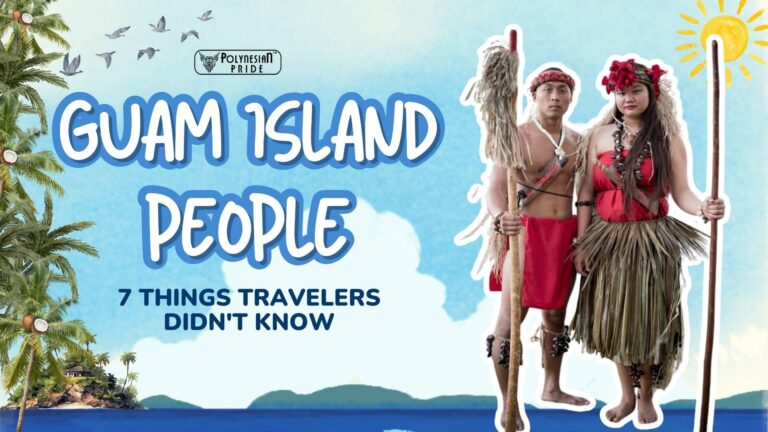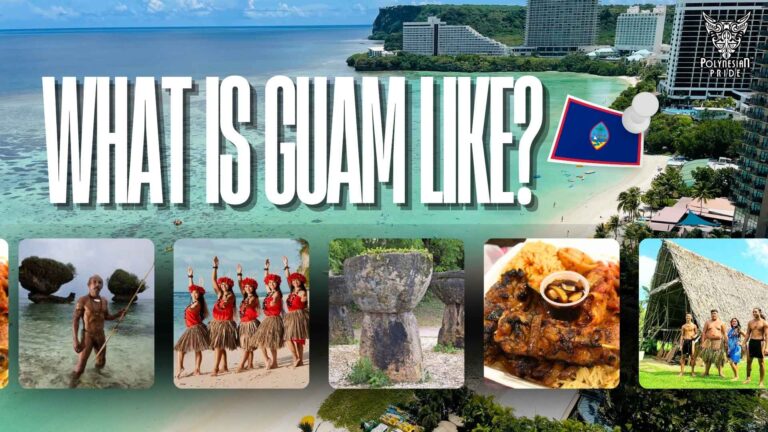Is New Guinea The Same As Papua New Guinea? Unraveling the Truth

INTRODUCTION
Have you ever wondered if New Guinea and Papua New Guinea are the same place? You’re not alone! This confusion is quite common, but the truth is that they are distinct yet closely related.
This article aims to clarify the distinctions between these two entities, exploring their unique characteristics, historical contexts, and cultural significance. By delving into the complexities of this region, we’ll unravel the truth behind the question: Is New Guinea the same as Papua New Guinea?
I. What is New Guinea?
New Guinea is the world’s second-largest island in Melanesia in the southwestern Pacific Ocean. This vast landmass is home to an incredible diversity of cultures, languages, and ecosystems, making it a fascinating subject of study for anthropologists, linguists, and naturalists alike.
Geographic Location and Features
New Guinea is located at coordinates 5°30′S 141°00′E, north of Australia and east of Indonesia. The island covers an impressive area of 785,753 km2 (303,381 sq mi), making it larger than Texas and slightly smaller than Turkey.
Key geographic features include:
- The New Guinea Highlands: A mountain range running through the center of the island
- Puncak Jaya: The highest point at 4,884 m (16,024 ft)
- Torres Strait: Separating New Guinea from Australia

Biodiversity and Ecosystems
New Guinea is renowned for its incredible biodiversity, estimated to contain 5 to 10 percent of the world’s total species. This ecological richness is due to the island’s varied landscapes, which include:
- Tropical rainforests
- Alpine grasslands
- Mangrove swamps
- Coral reefs
New Guinea shares much of its animal fauna with Australia, including marsupials like tree kangaroos and cuscuses. However, New Guinea also boasts many endemic species found nowhere else on Earth.
Political Division
One of the most crucial aspects to understand about New Guinea is its political division:
| Region | Political Status | Capital City |
| Eastern Half | Independent nation of Papua New Guinea | Port Moresby |
| Western Half | Part of Indonesia (provinces of Papua and West Papua) | Jayapura |
This division is central to understanding the relationship between New Guinea and Papua New Guinea, which we’ll explore further in subsequent sections.

II. What is Papua New Guinea?
Papua New Guinea is an independent nation that occupies the eastern half of New Guinea and numerous offshore islands. Papua New Guinea, known for its immense cultural and linguistic diversity, is often called “The Land of a Thousand Cultures”.
Geographic Extent and Population
Papua New Guinea includes:
- The eastern half of New Guinea island
- The Bismarck Archipelago
- The northern Solomon Islands
- Numerous smaller islands
As of 2020, its population was around 9 million, making it the most populous Pacific Island country.
Government and Economy
Papua New Guinea is a constitutional parliamentary democracy with a legal system based on English common law. It gained independence from Australia in 1975. Key economic sectors include:
- Mining (gold, copper, oil)
- Agriculture (coffee, cocoa, palm oil)
- Forestry
- Fishing
Despite its rich natural resources, PNG faces challenges such as poverty, limited access to education, and health issues.
Cultural Diversity
Papua New Guinea is one of the most culturally diverse countries in the world, with:
- Over 800 Indigenous languages in Papua New Guinea.
- Hundreds of distinct ethnic groups
- A wide variety of traditional customs and beliefs

III. The Confusion Between New Guinea and Papua New Guinea
Many people are confused by the similarity in names between New Guinea and Papua New Guinea. This section will explore the reasons behind this confusion and clarify the relationship between these two entities.
Origins of the Names
“New Guinea” dates back to 1545 when Spanish explorer Íñigo Ortiz de Retes coined it. He believed the island’s inhabitants resembled those of Guinea in Africa. On the other hand, “Papua” is thought to derive from a Malay word meaning “frizzly-haired,” describing the appearance of Indigenous Melanesian people. These terms reflect both the island’s history and its indigenous population.
Political and Geographical Distinctions
To understand the difference:
- New Guinea refers to the entire island divided between two countries.
- Papua New Guinea is an independent nation occupying the eastern half of the island plus offshore islands.
Common Misconceptions
Some common misconceptions include:
- Assuming New Guinea and Papua New Guinea are interchangeable terms
- Believing that Papua New Guinea encompasses the entire island of New Guinea
- Not realizing that the western part of New Guinea is part of Indonesia
Understanding these distinctions is crucial for accurate geographical knowledge, cultural awareness, and answering questions like “Is New Guinea the same as Papua New Guinea?”

IV. Cultural Diversity in New Guinea
New Guinea, including Papua New Guinea and the Indonesian provinces of Papua and West Papua, is one of Earth’s most culturally diverse regions.
Linguistic Diversity
The island is home to over 1,000 languages, representing about 15% of the world’s languages. Many of these languages have fewer than 1,000 speakers. This diversity is due to geographic isolation, a long history of human habitation, and complex social structures.
Traditional Societies and Customs
Tribal organization, subsistence agriculture, complex kinship systems, and rich oral traditions characterize New Guinea’s traditional societies. Notable cultural practices include:
- Initiation ceremonies.
- Historical tribal warfare.
- Complex trading networks.
- Diverse artistic traditions, such as mask-making and body decoration.

Impact of Modernization
Modern influences have significantly impacted traditional cultures. The economy has shifted from subsistence farming and barter to a cash economy and wage labor. Education has moved from oral traditions and practical skills to formal schooling and literacy. Religion has seen a transition from indigenous beliefs to Christianity and Islam. Governance has shifted from tribal leadership to national and provincial governments. Despite these changes, many communities strive to maintain their traditional practices.
Understanding these aspects is essential when considering “Is New Guinea the same as Papua New Guinea?” and recognizing the diverse cultural identities within the region.
V. Environmental Factors
New Guinea’s unique geography and location have resulted in an incredibly diverse and ecologically significant environment. Understanding these environmental factors is crucial to appreciating the island’s global importance and challenges.
Diverse Ecosystems
New Guinea hosts many ecosystems, including tropical rainforests, montane forests, alpine grasslands, mangrove swamps, and coral reefs. This diversity of habitats contributes to the island’s extraordinary biodiversity.
Biodiversity Hotspot
New Guinea stands out as a global biodiversity hotspot. An estimated 5-10% of the world’s species thrive on the island, showcasing high levels of endemism. It serves as an essential habitat for many threatened species. Notable examples of New Guinea’s unique fauna include tree kangaroos, birds of paradise, long-beaked echidnas, and numerous frog and reptile species.

VI. Tourism in New Guinea
Tourism in New Guinea, encompassing both Papua New Guinea and the Indonesian provinces of Papua and West Papua, offers unique experiences for adventurous travelers. While not a mass tourism destination, the region attracts visitors interested in its natural beauty, cultural diversity, and historical significance.
New Guinea Tourism in Papua New Guinea Part
In Papua New Guinea, tourism is burgeoning with a focus on ecotourism, rainforest treks, bird watching (especially for birds of paradise), scuba diving, snorkeling, cultural village visits, and vibrant cultural festivals like the Goroka Show and Mt. Hagen Cultural Show. Historical sites from World War II also draw visitors seeking adventure through activities such as hiking the Kokoda Track, surfing in remote spots, and thrilling white water rafting experiences.

New Guinea Tourism in Indonesian Part
Indonesian Papua, on the other hand, offers its unique attractions. Raja Ampat is renowned worldwide for its unparalleled diving opportunities, while the Baliem Valley beckons with trekking adventures and immersive cultural experiences. Lake Sentani showcases traditional arts and crafts, adding to the rich tapestry of experiences available in New Guinea. Whether you’re wondering, “Is New Guinea the same as Papua New Guinea?” or seeking adventure, both regions offer unforgettable journeys.

CONCLUSION
In conclusion, while New Guinea and Papua New Guinea are often considered the same, they are distinct in several ways. New Guinea encompasses the entire island and is divided into two parts: the eastern half, called Papua New Guinea, and the western half, which belongs to Indonesia. Understanding these differences is crucial for appreciating each region’s unique identities and historical backgrounds. Thus, when asking, “Is New Guinea the same as Papua New Guinea?” it is essential to recognize their distinct characteristics and separate identities.
FAQs
Is New Guinea the same as Papua New Guinea?
No, New Guinea refers to the entire island divided into Papua New Guinea (eastern part) and Western New Guinea (western part).
Why is New Guinea split in two?
The island of New Guinea has been divided into two roughly equal halves due to a combination of colonial legacy and Cold War geopolitics. The eastern half is the country of Papua New Guinea (PNG), while the western half became part of Indonesia in 1969.
Why are two countries named Guinea?
“New Guinea” dates back to 1545 when Spanish explorer Íñigo Ortiz de Retes coined it. He named the island because he believed its inhabitants resembled Guinea in Africa.
What makes New Guinea unique?
Located just 4° south of the Equator, New Guinea is unique for a tropical island because it has a glacier. Puncak Jaya, the highest point in the southwest Pacific at over 5,030 meters, dominates the island.

I am Leilani Miller – I research focusing on Vanuatu – volcanic landscapes, blue holes, coral reefs & rainforests. I have over five years of experience researching and sharing insights on tourism and environmental activism. Explore and experience without limits through my latest article.
Contact information:
Email: [email protected]
Tel: +1 (808) 555-1528






